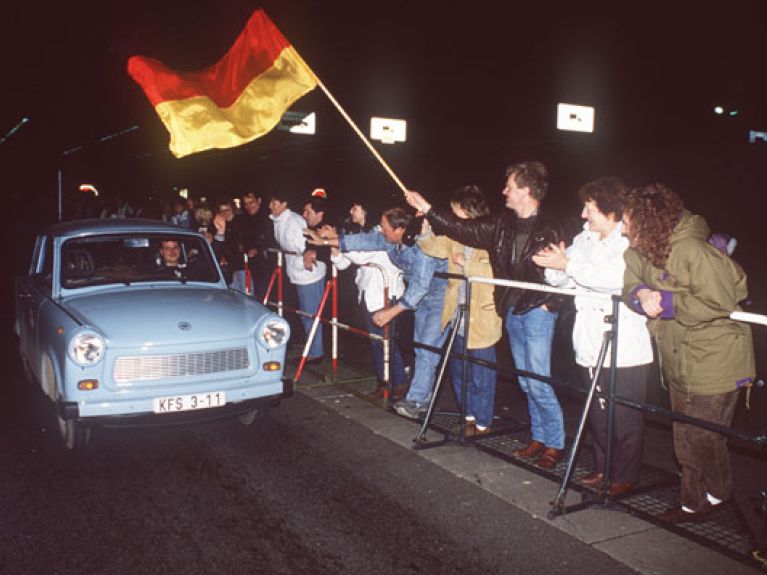The path to unity

The collapse of the GDR and German reunification 11 months later, on October 3, 1990, would have been practically inconceivable without the changes that had occurred in the Soviet Union from the mid-1980s onwards. The new state and party leader, Mikhail Gorbachev, had introduced wide-ranging reforms in the USSR. Gorbachev also forswore the Soviet Union’s hegemony over the Eastern Bloc and strove for greater cooperation with the West. Above all, Poland and Hungary seized the new opportunities. In May 1989, the Hungarians began cutting a substantial hole in the Iron Curtain. The complete opening up of the Hungarian frontier to the West then followed on September 11, 1989.
Following the peaceful revolution in the GDR, the reunification of the two German states moved nearer – an event that many people had no longer believed possible. Before that, however, the first free elections to the People’s Chamber were held on March 18, 1990. The main issues during the election campaign were the method for and the speed of the desired unification with West Germany. On May 18, 1990, the Treaty on Economic, Monetary and Social Union was signed. Since the GDR’s economic system was no longer capable of reform, the GDR assumed the economic system of the Federal Republic on July 1, 1990. Soon afterwards, consultations began in Berlin on the future shape of a unification treaty. Even before these negotiations were concluded, in a special session on August 23, 1990, the People’s Chamber resolved that the GDR should accede to the jurisdiction of the Basic Law on October 3, 1990.
Because of the rights and responsibilities of the four Second World War victor nations towards Germany as a whole and Berlin, reunification could not be accomplished without their consent. In February 1990, the victor powers agreed to joint negotiations with the two German states. On September 12, 1990, the international legal aspects of reunification were regulated in the Treaty on the Final Settlement with Respect to Germany, the so-called Two Plus Four Treaty between the Federal Republic of Germany and the GDR as well as France, the Soviet Union, the United Kingdom and the United States of America. Germany thereby regained its full sovereignty.
During the evening leading up to October 3, 1990, thousands of people celebrated the GDR’s accession to the territory of the Federal Republic in front of the Reichstag building in Berlin. Finally, after four decades, Germany’s national unity was restored.
The Wall fell in Germany – and in the world beyond the Iron Curtain had fallen between East and West. At the end of November 1990, the NATO countries and the states of the Warsaw Pact signed the first comprehensive disarmament agreement on conventional forces at the CSCE summit in Paris. The Charter of Paris for a New Europe declared: “The era of confrontation and division of Europe has ended” and that “a new era of democracy, peace and unity” had begun. East-West conflict was officially declared over almost exactly two years after the fall of the Wall, on November 7/8, 1991, at the NATO summit conference in Rome. The Cold War was finally consigned to the history books.
